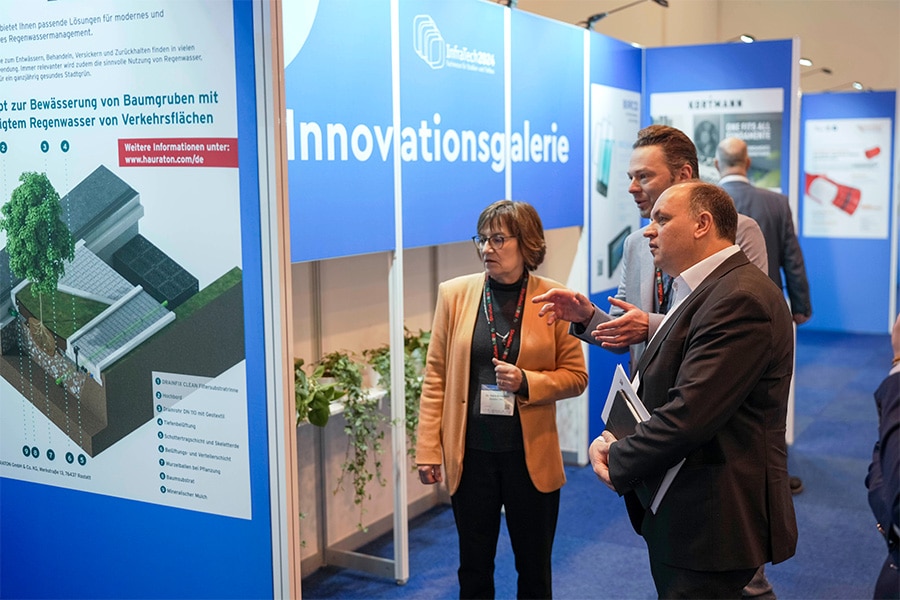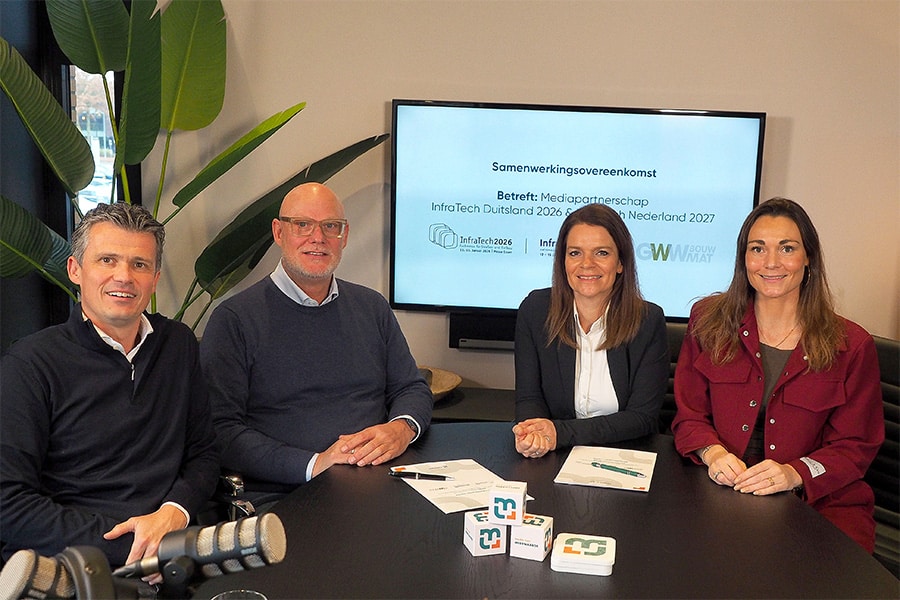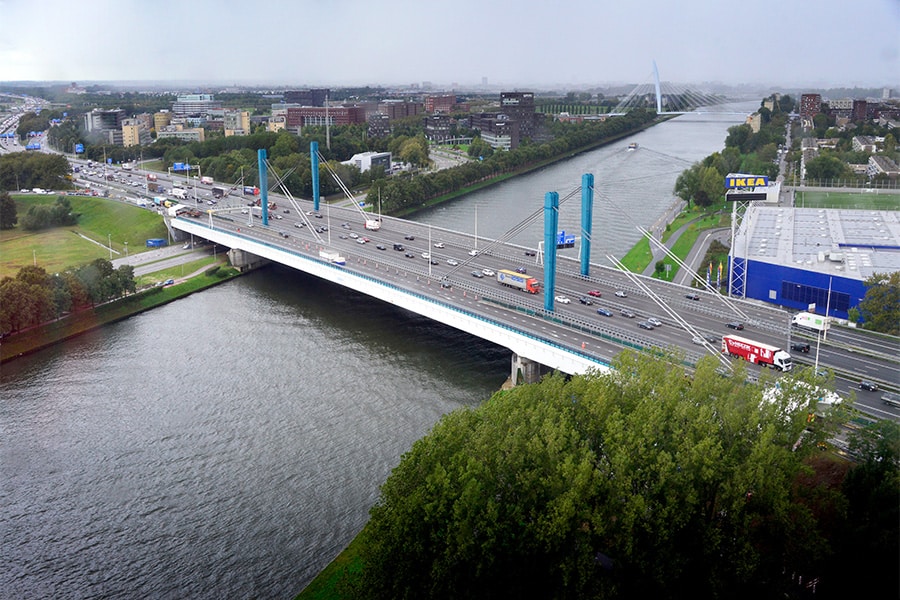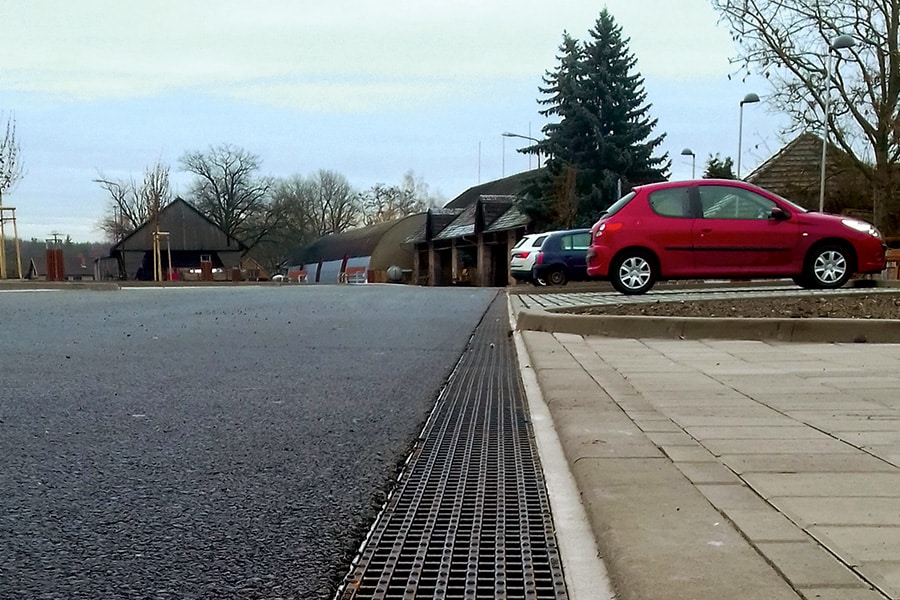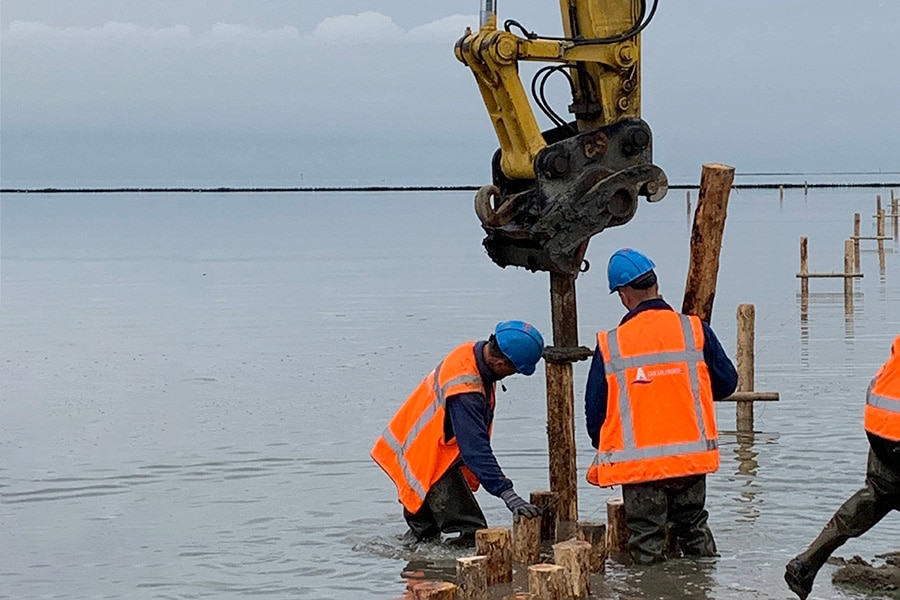
Van Aalsburg strengthens nature at dike reinforcement Lauwersmeerdijk
Project dike reinforcement Lauwersmeer, carried out by Combinatie Waddenkwartier (GMB and Heijmans), focuses not only on water safety, but also on strengthening nature. Because of its expertise in natural solutions, the combination engaged Van Aalsburg for two coupling projects.
"We are working on the salt marsh expansion and an inflow facility in the tidal Marnewaard for a natural transition between the dike and the mud flats in this project," says Dick van Aalsburg.
Rising dams for salt marsh development
Along the dike near the Westpolder, a salt marsh expansion of about 22 acres is coming. Van Aalsburg recently placed riding dams in the outer dike salt marsh area. "These riding dams, constructed from poles with filler wood, form a natural buffer: they break the waves and protect the dikes. It also promotes biodiversity: salt marshes are ideal habitats for various species of animals and plants. In addition, riding dams help absorb sea level rise and improve algae growth."
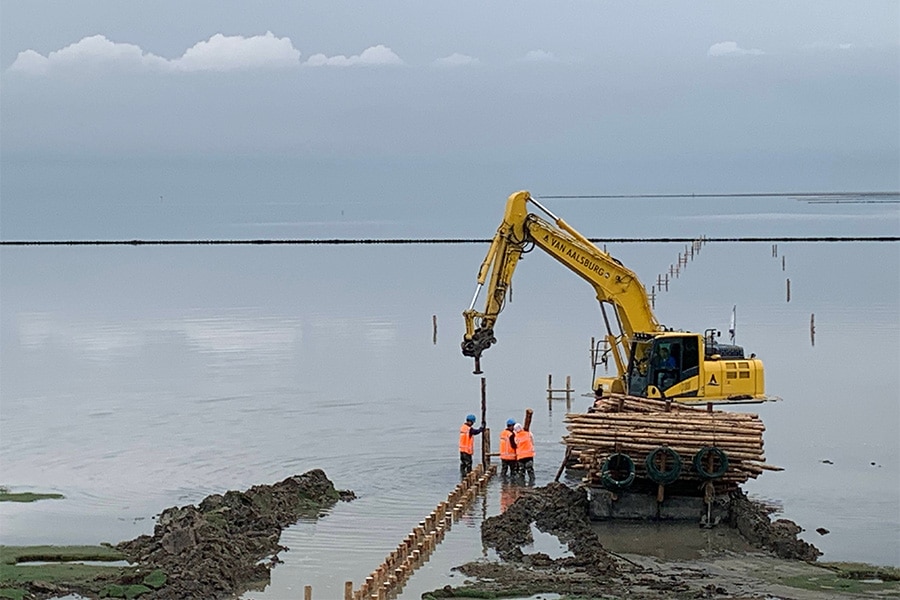
Specialist equipment
"Working in a tidal area is challenging," says Dick. "Besides ebb and flow, you have to deal with low bearing capacity of the soil. That's why we deployed specialized equipment, including our swamp crane that is specially designed for swampy areas such as along the Wadden coast. This enabled us to place the dams in a safe, efficient and environmentally friendly way." Dick explains that Van Aalsburg even developed a floating shanty so that the hard workers could have a dry lunch during high tide.
Instream supply tidal zone
In addition to constructing the riding dams, Van Aalsburg will also handle their maintenance. "And in 2025 the construction of the inflow facility in the tidal area will start, creating a natural transition between the Wadden Sea and the tidal area. The better balance between fresh and salt water is essential for the flora and fauna in this area."
With their years of experience and innovative approach, Van Aalsburg is contributing to this nature compensation project that will not only make the Dutch coastline safer, but also ecologically richer.
